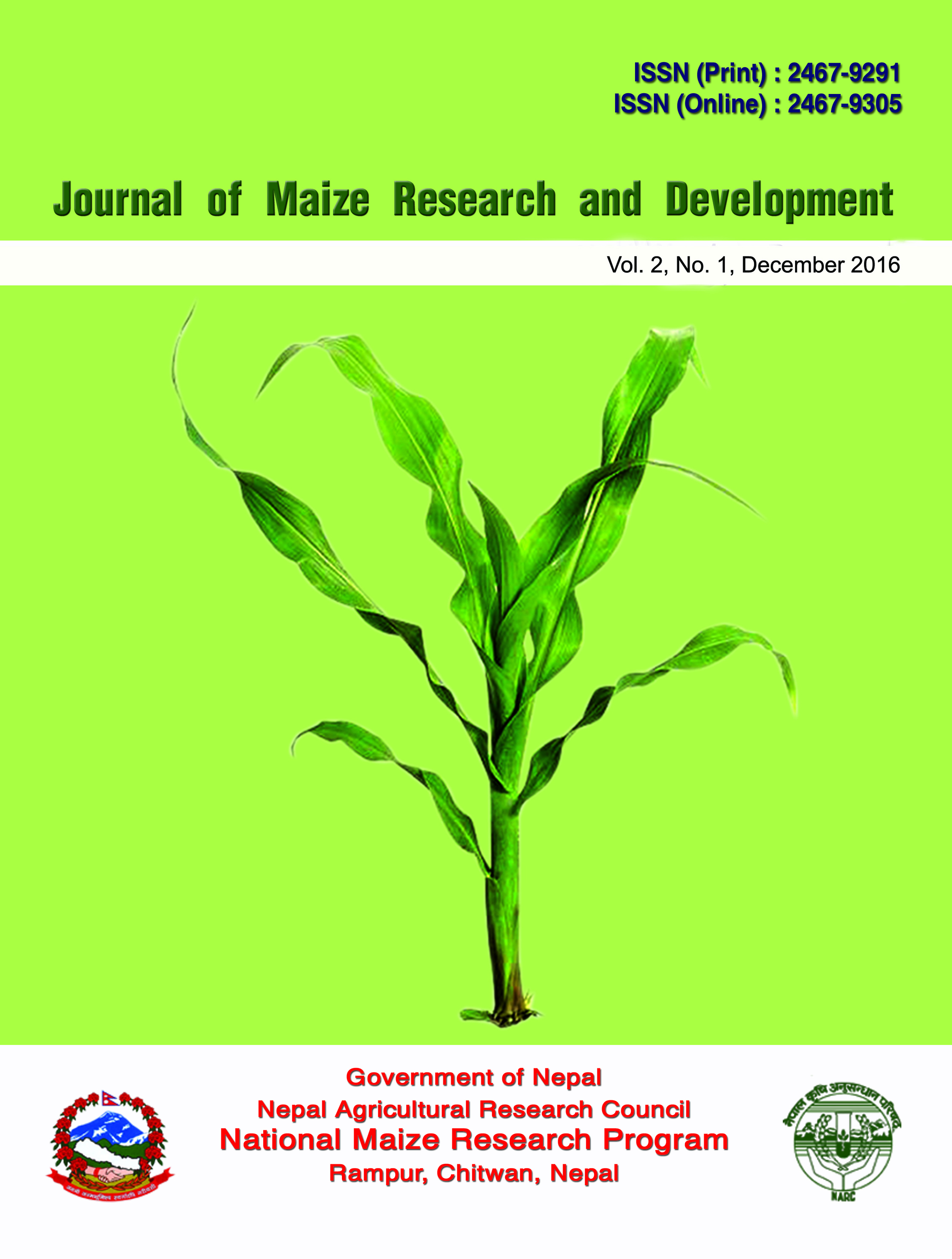Maize production in mid hills of Nepal: from food to feed security
DOI:
https://doi.org/10.3126/jmrd.v2i1.16212Keywords:
, maize, feed security, food security, utilization pattern, food habitAbstract
This study was undertaken in 2016 to analyze the production and utilization of maize in Nepal. Sixty maize growers from Kavre and Lamjung districts were selected using purposive, cluster and simple random sampling techniques. Similarly, six feed industries and five maize experts from Chitwan district were also interviewed. Study shows 56% of the total areas were used for maize production and 50% of the maize areas were covered by hybrid maize. There was no practice of contract maize production. The results revealed that 60%, 25% and 3% of the grain were used for animal feed, food and seed respectively in hill districts. Whereas the remaining amount of the maize (12%) was sold to the different buyers. The proportion of maize feed supply to different animals in the study area was varying. Result shows that at least 1.5 million tons of maize is required only to the feed industries affiliated with national feed industry association in Nepal. Similarly, out of total maize used in feed production, 87% of the maize was imported from India each year by feed industries. Analysis shows negative correlation between scale of feed production and use of domestic maize due to unavailability of required quantity of maize in time. The major pre-condition of feed industries for maize buying was moisture content which must be equal or less than 14%. Very little or no inert materials and physical injury, free from fungal attack and bigger size were also the criteria for maize buying. However, some of the feed industries were also thinking about protein and amino acid contents. Result shows 13% and 8.5% increasing demand of poultry feed and animal feed, respectively over the last five year in Nepal. Most likely, maize is known as a means of food security in Nepal, however, in the context of changing utilization patterns at the farm level and also tremendous increasing demand of maize at the industry level suggest to give more focus on development and dissemination of maize varieties that can contribute to the feed security issues as well.Downloads
Download data is not yet available.
Abstract
2111
PDF
2689
Downloads
Published
2016-12-23
How to Cite
Timsina, K. P., Ghimire, Y. N., & Lamichhane, J. (2016). Maize production in mid hills of Nepal: from food to feed security. Journal of Maize Research and Development, 2(1), 20–29. https://doi.org/10.3126/jmrd.v2i1.16212
Issue
Section
Articles




